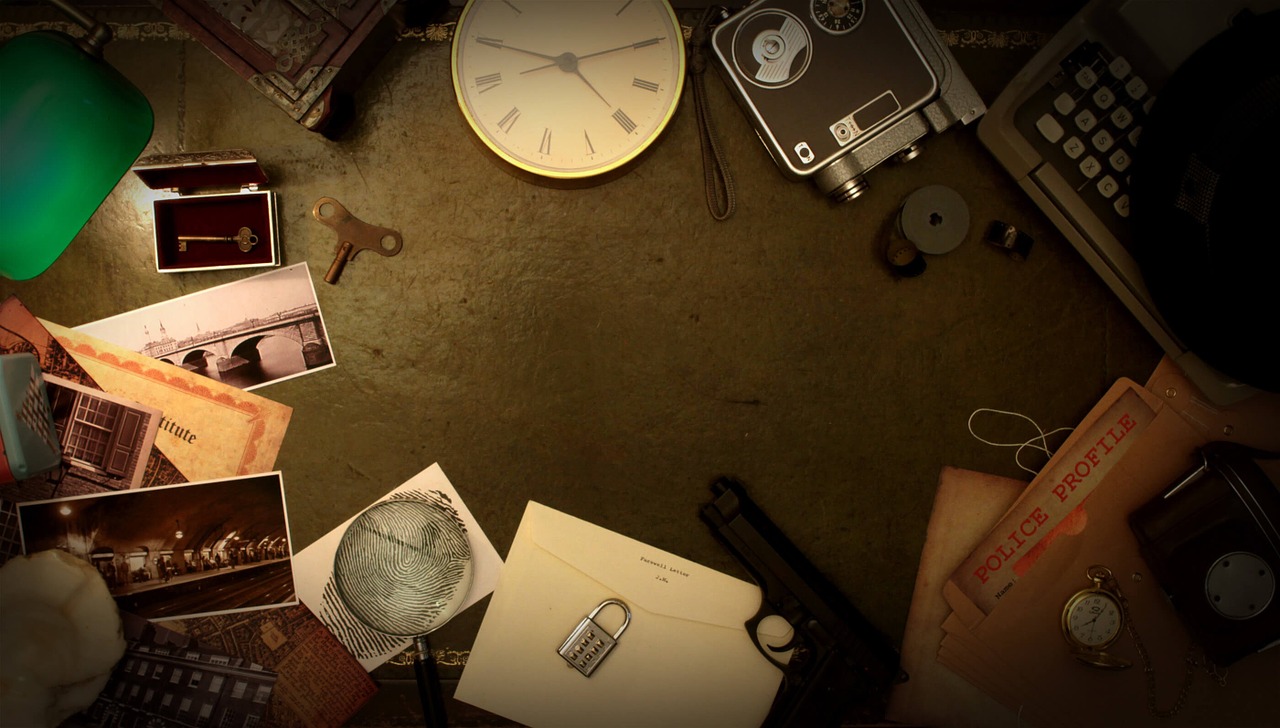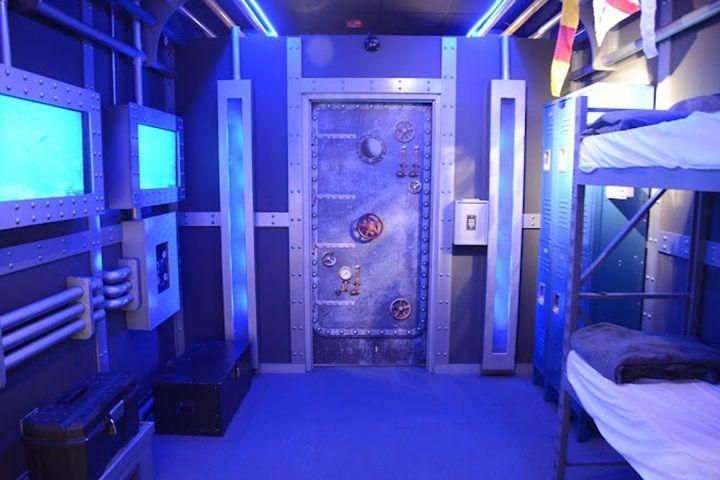Discover Thrilling Adventures at Escape Room Austin for a Remarkable Experience
Discover Thrilling Adventures at Escape Room Austin for a Remarkable Experience
Blog Article
Why a Getaway Space Is the Perfect Task for Building Stronger Relationships at Job
Retreat areas offer a special setup for boosting workplace connections by fostering communication, collaboration, and trust amongst staff member. The immersive and high-pressure atmosphere urges individuals to assume artistically and function together to resolve complex difficulties, breaking down social barriers and promoting sociability. This interactive experience not just discloses new elements of coworkers' individualities yet also builds long lasting memories that add to a much more efficient and unified workplace. Yet what certain components of an escape room make it so effective for team building?
Boosts Group Communication
Incorporating getaway spaces into team-building activities can considerably boost group communication by offering an immersive and vibrant setting where employees need to team up to fix complicated obstacles. The high-pressure, adrenaline-driven setting of an escape room calls for staff member to interact plainly and successfully, typically under limited time constraints. This necessity for accurate interaction aids break down barriers and urges open dialogue, as participants must share info, monitorings, and ideas quickly to advance.

Furthermore, the instant comments loop within retreat spaces-- where every action has a direct consequence-- reinforces the significance of clear and reliable communication. Groups find out to improve their interaction techniques in real time, improving their ability to share essential details succinctly. These abilities, focused in the context of a retreat space, are straight transferable to daily work situations, enhancing overall team performance and communication.
Fosters Partnership
Collaboration is the cornerstone of any successful group, and getaway rooms supply a distinct system to grow this important ability. Within the high-stakes atmosphere of an escape area, employee are called for to function carefully together to resolve a collection of complicated puzzles and obstacles. This immersive situation demands that individuals merge their diverse abilities, knowledge, and point of views to achieve a typical objective.
Unlike traditional team-building exercises, escape rooms offer prompt responses on collaboration initiatives. As individuals proceed with the room, they can see the direct effect of their collective initiatives, strengthening the worth of interacting. The time-sensitive nature of getaway areas additionally requires effective communication and sychronisation, as any type of lapse in teamwork can lead to failing.
Additionally, the diverse range of tasks in a retreat space makes sure that every team member has a chance to contribute meaningfully, highlighting the value of inclusivity in collaborative initiatives. By demanding real-time problem-solving and decision-making, getaway rooms create a microcosm of the joint characteristics needed in the work environment. This experiential knowing environment promotes more powerful interdepartmental partnerships, improving overall business communication and performance.
Builds Trust and Self-confidence
Structure on the collaborative structure developed in a getaway room, these tasks also play a considerable function in fostering depend on and confidence amongst group members. In the high-pressure setting of a getaway area, workers should rely upon each various other's skills and judgment to fix puzzles and achieve their usual goal. This dependence grows a sense of trust, as employee witness firsthand the abilities and integrity of their coworkers.
Moreover, effectively browsing the challenges within a getaway room bolsters collective and private confidence. Challenging and getting rid of complicated troubles in a constrained timeframe enhances a team's belief in their cumulative analytic capabilities. Each member acquires self-confidence from their payments being recognized and valued, which can equate to better performance and collaboration back in the work environment.
In addition, the need for clear communication and shared assistance in a retreat area situation highlights the importance of each team member's function. This exposure to interdependency assists to damage down barriers and foster an extra natural and trusting group dynamic - escape room austin. Basically, getaway spaces function as a microcosm for work environment obstacles, giving a regulated setting where count on and self-confidence can be constructed and enhanced
Motivates Innovative Problem-Solving
Escape spaces, with their diverse obstacles and intricate problems, inherently motivate imaginative analytical among individuals. These immersive situations need staff members to think outside the box, usually utilizing unusual techniques to decipher codes, unlock hidden areas, and inevitably getaway. This atmosphere pushes staff member to leverage their specific abilities and viewpoints, cultivating a culture of advancement and partnership.
In the high-pressure setting of an escape area, standard analytical methods might not be sufficient, motivating individuals to embrace experimental approaches and brand-new techniques. This change from routine analytical reasoning to creative ideation can be exceptionally useful in an office context. It enables employees to damage without habitual patterns and discover unique services to intricate problems.
In addition, the time-sensitive nature of getaway rooms cultivates fast thinking and versatility, abilities that are transferable to real-world expert circumstances. As coworkers find here brainstorm and synergize to overcome challenges, they find out to value varied inputs and appreciate the diverse strategies each team participant brings to the table. This collective initiative not just improves problem-solving capacities but also enhances social connections, as staff members witness firsthand the power of cumulative creativity in accomplishing typical objectives.
Getting involved in a retreat room gives employees with a special common experience that goes past the common day interactions. This immersive activity needs partnership under time restrictions and high-pressure circumstances, fostering a sense of unity and mutual reliance amongst team members. Unlike regular office tasks, retreat rooms challenge individuals to believe and act jointly, thus producing remarkable experiences that strengthen interpersonal bonds.

In addition, the one-of-a-kind setup of an escape area damages the dullness of everyday job life, using a fresh context in which workers can connect. This modification of views can expose brand-new aspects of colleagues' individualities and capability, promoting a deeper understanding and appreciation of each other. Inevitably, the shared experiences gained from an escape space not only advertise stronger partnerships yet additionally add to a much more productive and unified workplace.
Conclusion
To conclude, retreat rooms act as an outstanding tool for boosting work environment partnerships by promoting group communication, cultivating partnership, developing count on and self-confidence, and encouraging creative analytical. The immersive environment and shared obstacles create long-term memories and reveal brand-new elements of colleagues' characters. These experiences add to a much more effective and harmonious check it out work environment, inevitably reinforcing the bonds among staff member and improving general business cohesion.
Retreat rooms use a distinct setup for boosting workplace partnerships by cultivating communication, cooperation, and trust fund among group members. Within the high-stakes atmosphere of a getaway area, group members are needed to function very closely together to solve a collection of complex challenges and difficulties.In addition, the diverse range of jobs in an escape room makes certain that every group participant has an opportunity to contribute meaningfully, highlighting the significance of inclusivity in collaborative efforts.Building on the collaborative foundation developed in an escape room, these activities additionally play a significant role in cultivating trust and More Info confidence among team members.Furthermore, the need for clear interaction and common assistance in an escape space situation highlights the value of each team member's duty.
Report this page